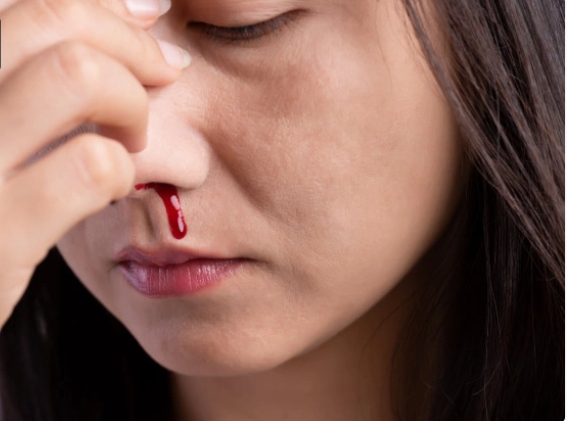Never disregard your Nosebleeds. They don’t drip without a purpose!
A 14 year old girl presented to her paediatrician. She complained of frequent nosebleeds occurring at least 3 to 4 times a week. Although, she would manage her bleeds quite well, at times they’d become very inconvenient.
The patient’s mother added that her daughter had a history of being bruised very easily. However, there was no history of any bleeding disorders in their family as per the mother.
Observations Other Than NoseBleeds
The patient’s mother also narrated several other changes she had seen in her daughter. Over the last 6 to 8 months, her daughter had been displaying irritable mood and an increased rate of speech. She also reported an increased frequency of headaches and leg pain with even a little exercise in her daughter, during this time.
Hot and Hungry!
The little girl felt hot all the time according to her mother. For this reason, she would wear half-sleeves even in winter to cool things off. Further digging revealed a positive history of hypothyroidism in the patient’s mother, aunt and maternal grandmother.
The girl’s mother also instituted that her daughter would eat all the time. However, the mother did not notice any weight changes in her daughter.
Medical History
Patient had a history of absence seizures. The seizures started at the age of seven. She had been taking sodium valproate which she discontinued 18 months prior to her current visit.
Examination and Investigations
On examination, the patient had an elevated blood pressure and heart beat. Doctors also noted slight bulging of her eyes, i.e., exophthalmos. The skin was moist and the hair thin and dry.
Her blood profile was normal. However, she had elevated thyroxine levels and significantly lowered thyrotropin (findings seen in hyperthyroidism).
The Bottom Line
The paediatrician concluded that the girl had Grave’s disease. It is an autoimmune disease in which stimulating antibodies are formed against thyroid gland resulting in increased levels of thyroid hormones or hyperthyroidism.
The exact onset of the disease in this patient could not be known. It was the recent increase in nose bleeds and the bulging of her eyes that brought her condition to attention.




I learned that thryrotropin —- will less in graves diseases— due to negative feedback,
Methimazole , radioiodine —- short course of treatment
Definitive— total thyroiectomy follow by levothyrosine .